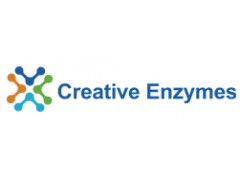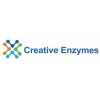Cat No.
NATE-0327
Description
Glutathione S-transferases (GSTs), previously known as ligandins, comprise a family of eukaryotic and prokaryotic phase II metabolic isozymes best known for their ability to catalyze the conjugation of the reduced form of glutathione (GSH) to xenobiotic substrates for the purpose of detoxification. The GST family consists of three superfamilies:the cytosolic, mitochondrial, and microsomal—also known as MAPEG—proteins. Members of the GST superfamily are extremely diverse in amino acid sequence, and a large fraction of the sequences deposited in public databases are of unknown function. The Enzyme Function Initiative (EFI) is using GSTs as a model superfamily to identify new GST functions.
Abbr
GST, Native (Rat)
Alias
GST
Source
Rat Liver
Species
Rat
Form
Lyophilized
Enzyme Commission Number
EC 2.5.1.18
Bio-activity
> 10 U/mg
CAS No.
50812-37-8
Purification
Purified
Unit Definition
One unit will catalyze the transfer of one micromole of glutathione to 1-chloro-2,4-dinitrobenzene per minute at 37°C and pH 6.5.
Gene Name
Gsta3 glutathione S-transferase A3 [Rattus norvegicus]
Synonyms
Glutathione S-transferases; GSTs; GST; Glutathione S-alkenetransferase; Glutathione S-alkyltransferase; Glutathione S-aralkyltransferase; Glutathione S-aryltransferase; Glutathione S-epoxidetransferase; RX:Glutathione R-transferase; EC 2.5.1.18; 50812-37-8
GeneID
24421
mRNA Refseq
NM_031509
Protein Refseq
NP_113697
Pathway
Drug metabolism-cytochrome P450, organism-specific biosystem; Drug metabolism-cytochrome P450, conserved biosystem; Glutathione metabolism, organism-specific biosystem; Glutathione metabolism, organism-specific biosystem; Glutathione metabolism, conserved biosystem; Metabolism of xenobiotics by cytochrome P450, organism-specific biosystem; Metabolism of xenobiotics by cytochrome P450, conserved biosystem
Function
drug binding; glutathione binding; glutathione transferase activity; glutathione transferase activity; transferase activity





